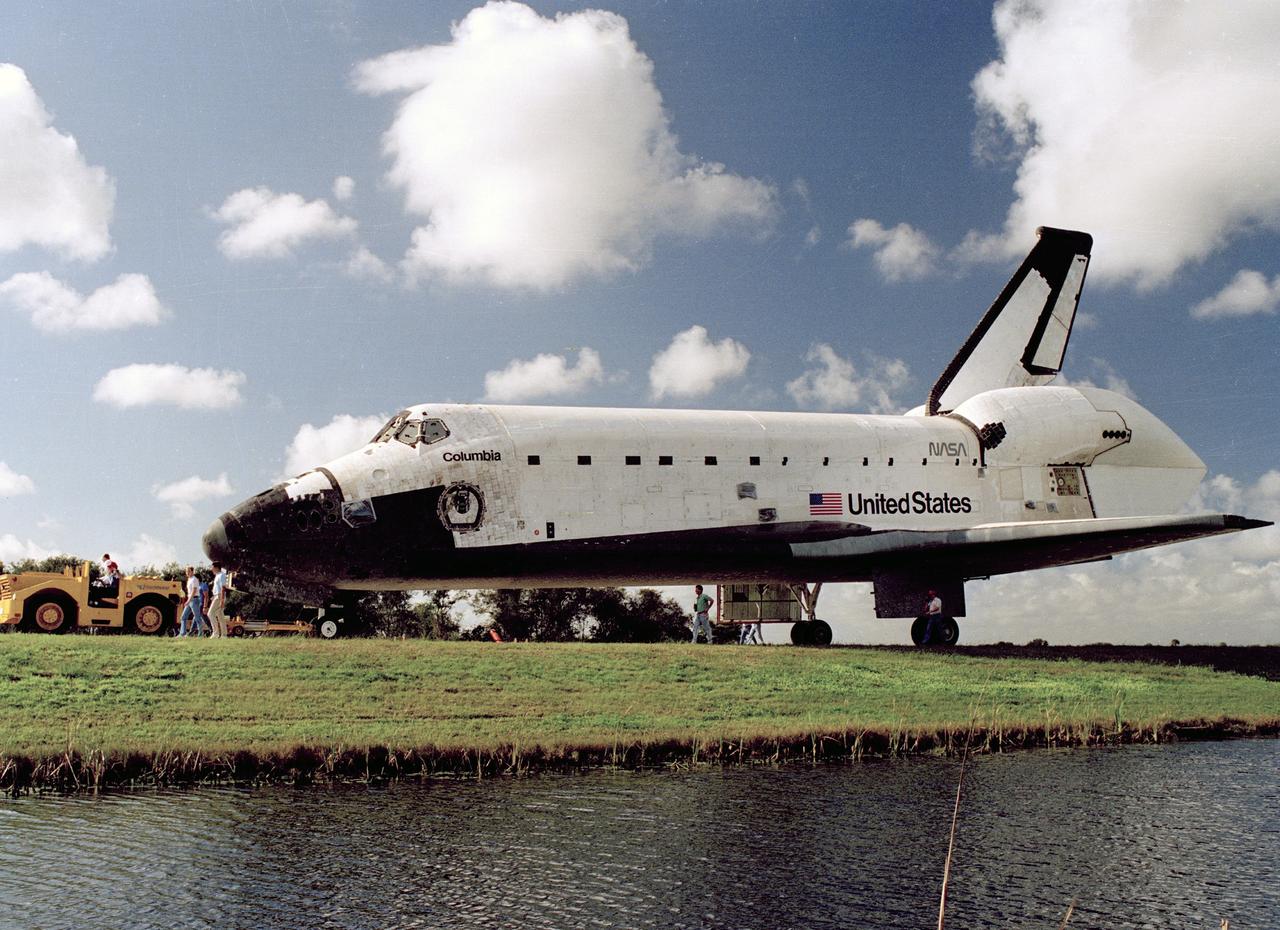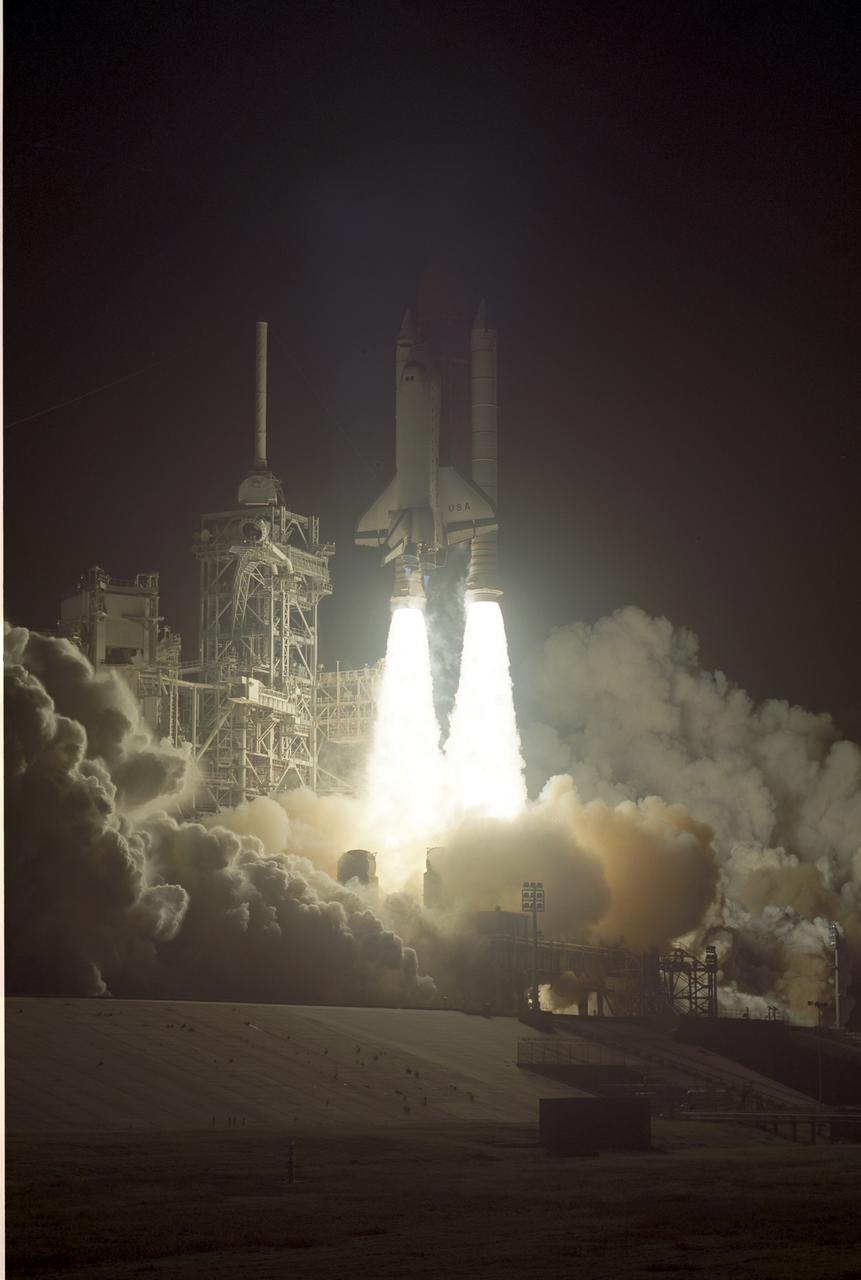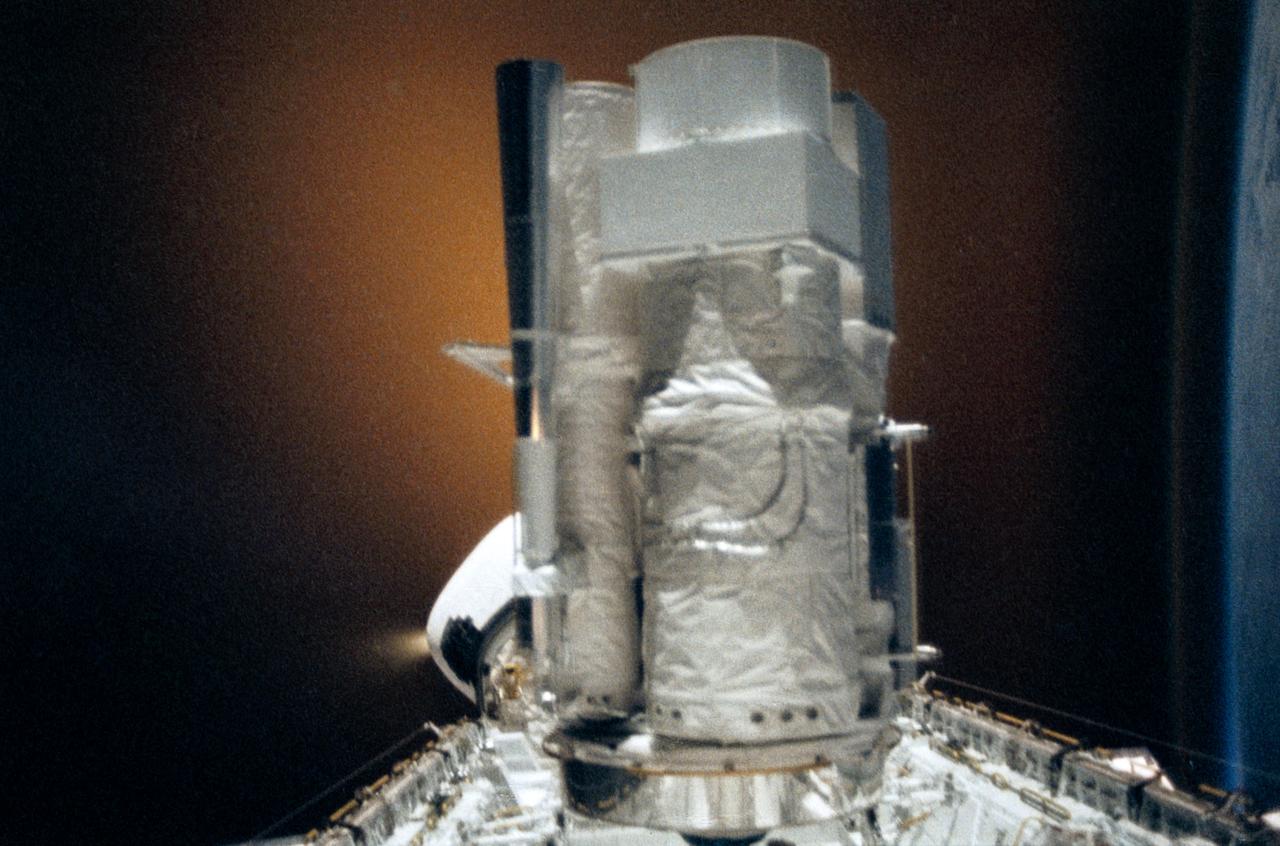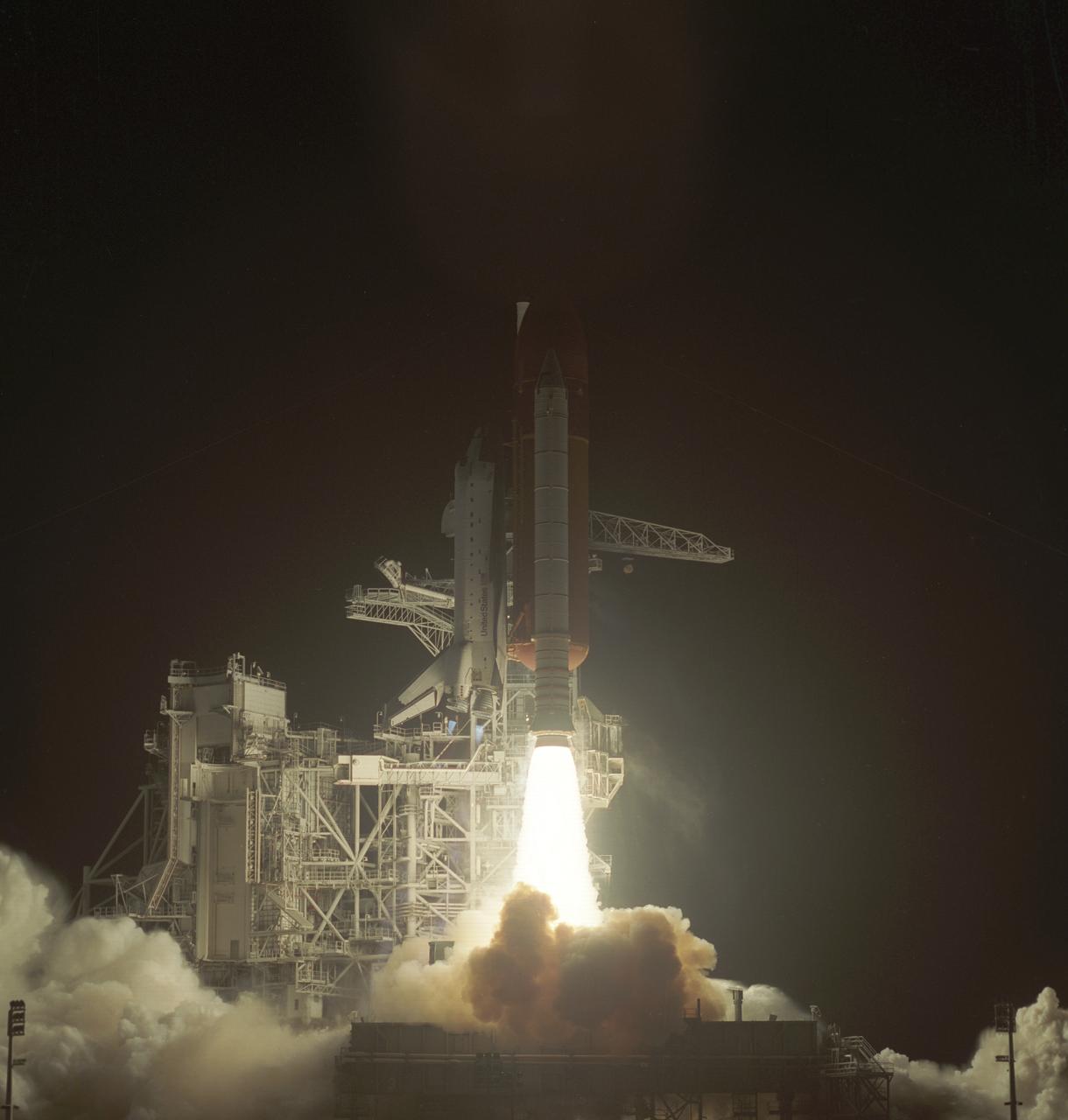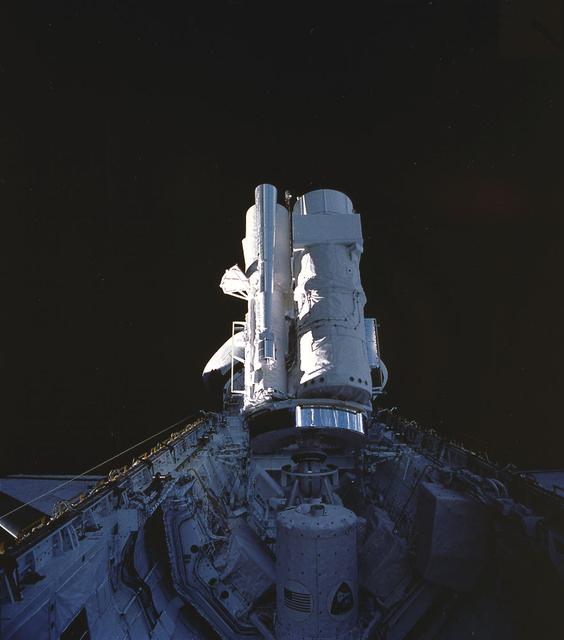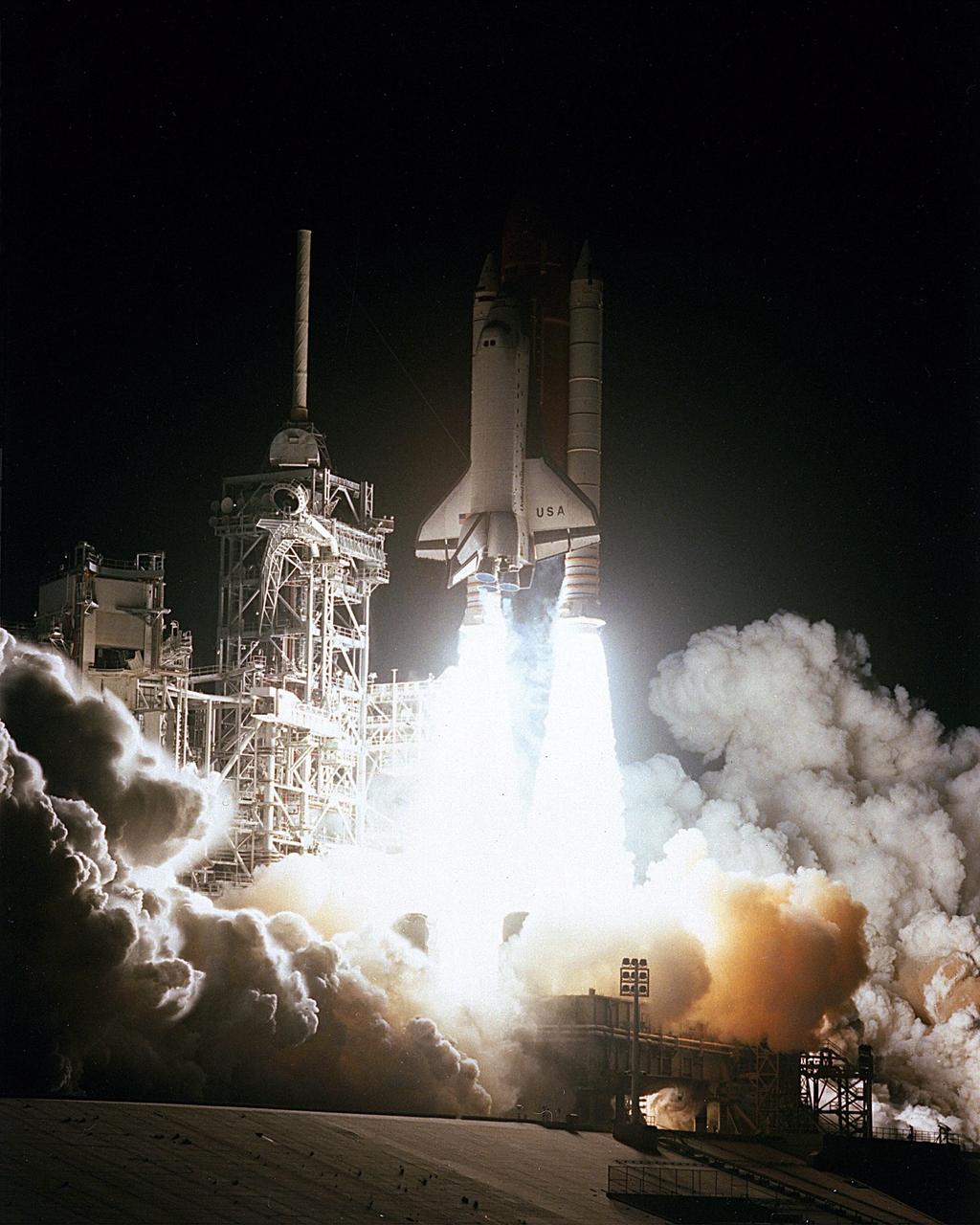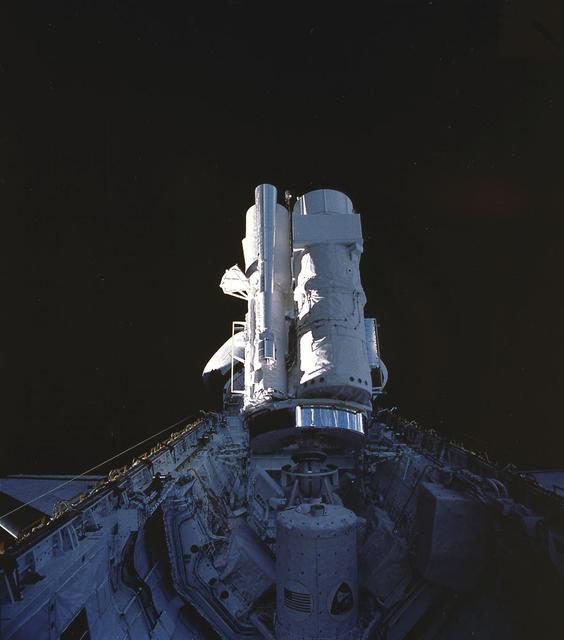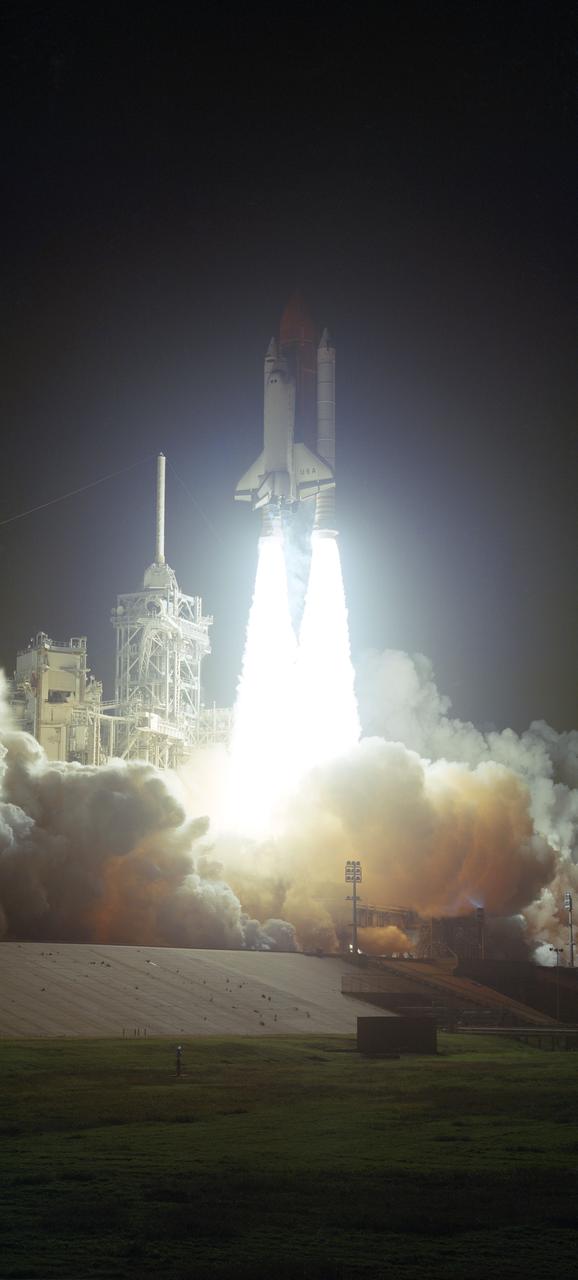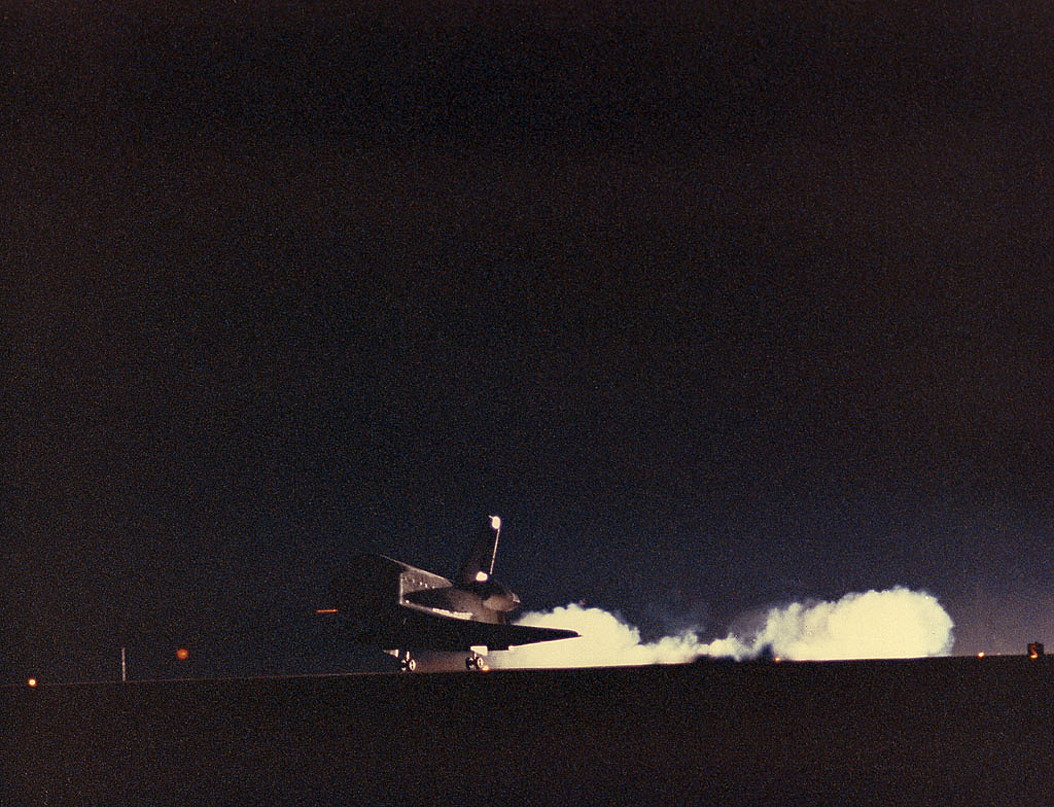STS-35 Fact Sheet
By Cliff Lethbridge
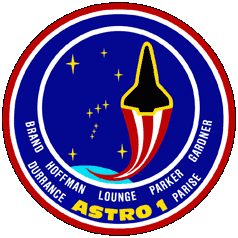
STS-35 — Columbia
38th Space Shuttle Mission
10th Flight of Columbia
Crew:
Vance D. Brand, Commander
Guy S. Gardner, Pilot
Jeffrey A. Hoffman, Mission Specialist
John M. Lounge, Mission Specialist
Robert A. R. Parker, Mission Specialist
Ronald A. Parise, Payload Specialist
Samuel T. Durrance, Payload Specialist
Orbiter Preparations:
Tow to Orbiter Processing Facility – January 30, 1990
Rollover to Vehicle Assembly Building – April 16, 1990
Rollout to Launch Pad 39A – April 22, 1990
Rollback to Vehicle Assembly Building – June 12, 1990
Rollover to Orbiter Processing Facility – June 15, 1990
Rollover to Vehicle Assembly Building – August 2, 1990
Rollout to Launch Pad 39A – August 9, 1990
Rollaround to Launch Pad 39B – October 8, 1990
Rollback to Vehicle Assembly Building – October 9, 1990
Rollout to Launch Pad 39B – October 14, 1990
Launch:
December 2, 1990 – 1:49:01 a.m. EST. Launch was originally scheduled for May 16, 1990. Launch was rescheduled to May 30, 1990 to facilitate repairs to Columbia’s freon coolant system.
Launch attempt on May 30, 1990 was scrubbed due to a minor liquid hydrogen leak at Columbia’s tail service mast discovered during tanking operations. Major liquid hydrogen leaks were also discovered at the external tank/orbiter 17-inch quick disconnect valve assembly and 17-inch umbilical assembly.
Repairs could not be made at the launch pad, so Columbia was returned to the Orbiter Processing Facility. Launch was rescheduled for September 1, 1990. Two days prior to launch, an avionics box on the ASTRO-1 payload malfunctioned and had to be changed out and retested.
Launch was rescheduled for September 6, 1990. During tanking operations on September 6, unusually high concentrations of liquid hydrogen were discovered in Columbia’s aft engine compartment, causing a scrub. NASA managers concluded that additional leaks not pinpointed earlier had resurfaced but could be repaired at the launch pad.
Three liquid hydrogen recirculation pumps were replaced and retested. A teflon cover seal in Main Engine Number Three hydrogen prevalve was also replaced. Launch was rescheduled for September 18, 1990. Liquid hydrogen leaks were again discovered on September 18 tanking operations, causing a launch scrub.
NASA managers decided to postpone Mission STS-35 until a complete review of leak problems could be completed. Columbia was transferred to launch pad 39B on October 8, 1990 to make way for Atlantis/STS-38 launch preparations.
Tropical Storm Klaus forced Columbia to be rolled back to the Vehicle Assembly Building on October 9, 1990. Columbia was returned to Launch Pad 39B on October 14, 1990.
Tanking tests on October 30, 1990 did not discover any excessive liquid hydrogen leaks. Launch was rescheduled for December 2, 1990. December 2 launch was delayed 21 minutes due to the presence of low level clouds in the launch area.
Landing:
December 10, 1990 – 9:54:09 p.m. PST at Runway 22, Edwards Air Force Base, California. Rollout distance was 10,566 feet. Rollout time was 58 seconds. Mission duration was 8 days, 23 hours, 5 minutes, 8 seconds. Landing occurred during the 144th orbit.
The mission was cut short one day due to forecast of bad weather at Edwards Air Force Base primary landing site.
Mission Summary:
The mission’s primary objective was the observation of celestial sphere of ultraviolet and X-ray astronomy with the ASTRO-1 observatory. ASTRO-1 consisted of the Hopkins Ultraviolet Telescope (HUT), Wisconsin Ultraviolet Photo-Polarimeter Experiment (WUPPE), Ultraviolet Imaging Telescope (UIT) and Broad Band X-ray Telescope (BBXRT).
Other experiments included the Shuttle Amateur Radio Experiment-2 (SAREX-2), Air Force Maui Optical Site (AMOS) and crew-conducted Space Classroom Program “Assignment: The Stars” to spark student interest in science, math and technology.
Technical difficulties with the ASTRO-1 package resulted in 70% overall completion of scientific objectives. The crew experienced trouble dumping waste water due to clogged drains.
SELECTED NASA PHOTOS FROM STS-35



